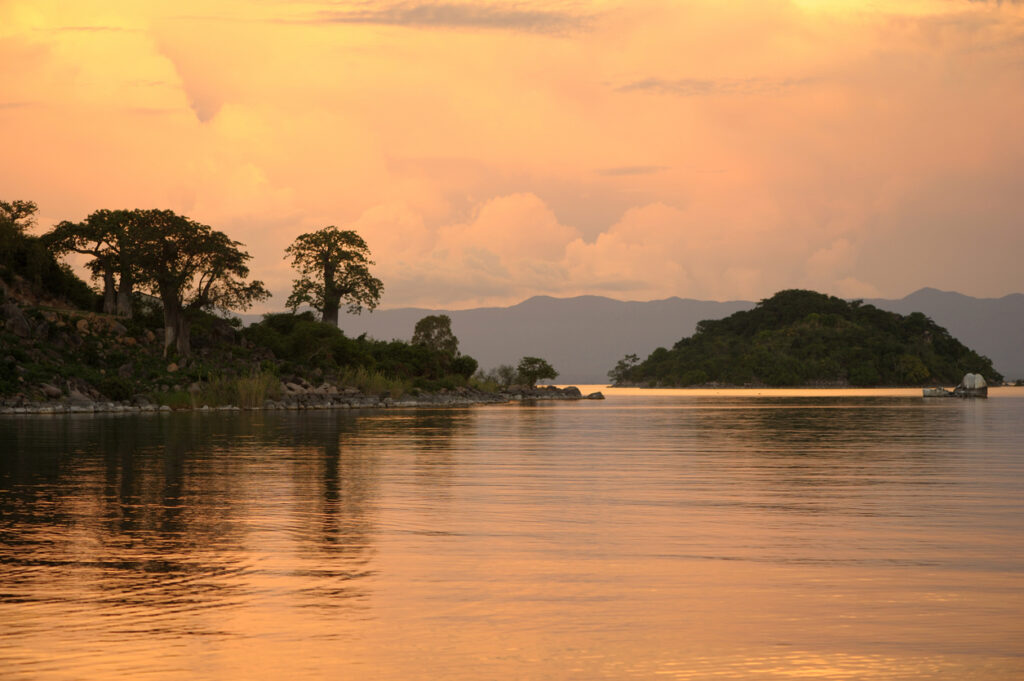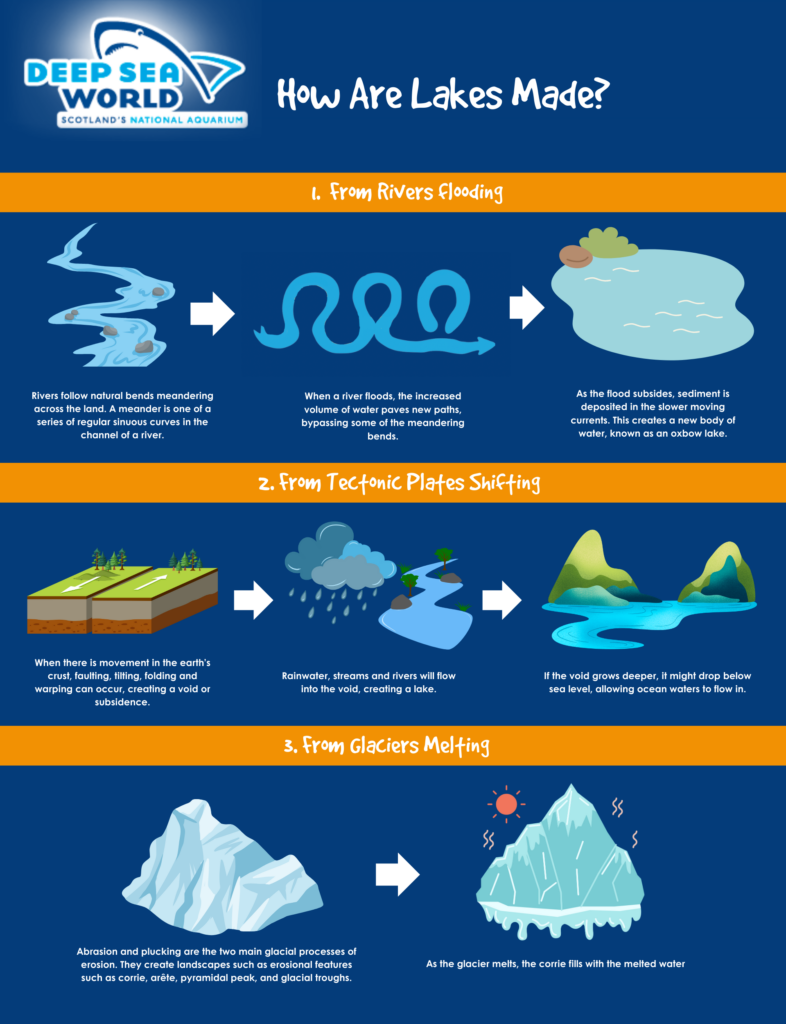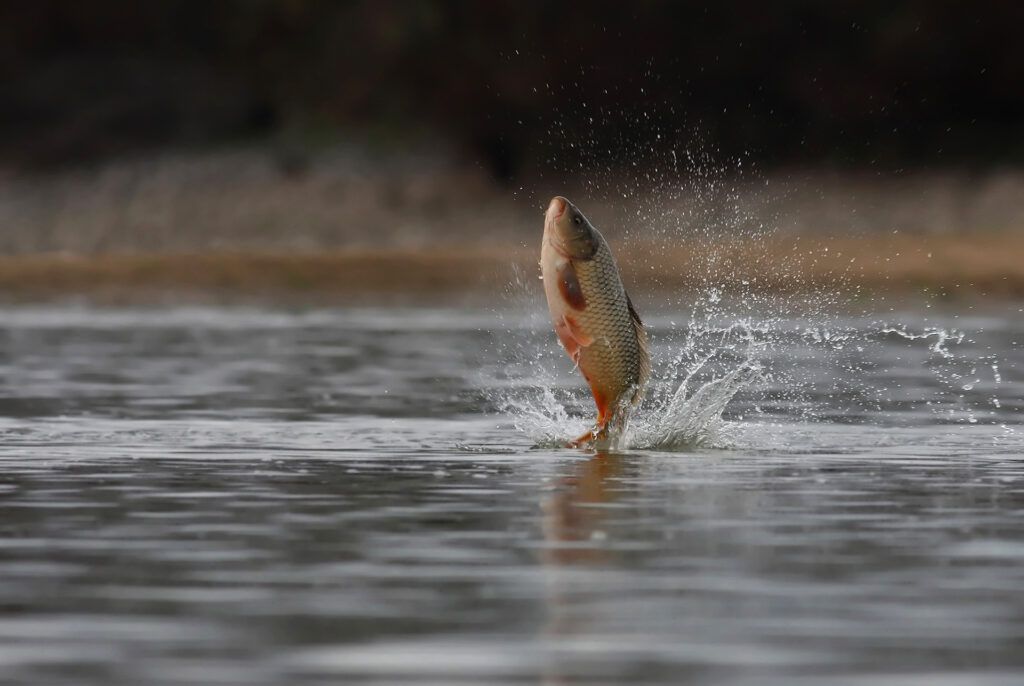Lakes are found across the world, on every continent and in a variety of environments including mountains, near the sea and everywhere in between. But how did they get there in the first place, and do they stay the same over the years? How do fish get into lakes and how do they survive?
Let us answer all your burning questions about how lakes are made, with some fun facts along the way!
Where are the biggest lakes?
A lake is classified as a body of water that is surrounded by land, and they can vary in size with some being as small as a pond, while others can be as big as seas. In fact, the largest lake in the world is actually the Caspian Sea, covering an area bigger than 143,000 square miles – that’s just under half the size of the whole of the UK!
Lake Malawi is the world’s 9th biggest lake – but it’s what lives in the lake that is even more spectacular. Lake Malawi is home is more species of fish than any other lake in the world, and some areas of the lake are known to be marine reserves to prevent fishing and protect the lake’s marine life.

Lake Baikal, in the Siberian region of Russia, is thought to be the deepest lake at around 1,620 metres. It’s also said to be the oldest lake in the world too!
On the other end of the scale, the world’s smallest lake is located in Liaoning Province, China. Benxi Lake measures just 15 square metres.
How do lakes appear in the first place?
So, there you have a better idea of just how lakes can vary in shape and size, but how do they get there?
Most lakes are created when water fills basins across the surface of the earth, which are bowl-shaped depressions that can be created in a number of different ways. If you can remember what you learnt in geography, some lake basins are formed when the earth’s tectonic plates buckle or break apart, creating what we know as faults. This causes a natural basin that fills with rainfall or water from streams. When the tectonic plates move near an ocean, part of the ocean can become separated by a new area of land that forms, resulting in a lake. Both the Caspian Sea and Lake Baikal were created in this way.
Lakes across the northern hemisphere were actually made by glaciers during the Ice Age. The weight of the ice resulted in huge pits, scrubbing the land away as the glaciers moved. As the glaciers melted, water filled the pits, creating lakes! You’ll find a lot of glacial lakes across North America and Europe – in particular, the American Great Lakes were created mostly through glaciers.
However, for some lakes, it has nothing to do with the depressions in the earth made by tectonic plates or glaciers. Instead, some lakes are created as a result of rivers flooding. Many rivers winds across the land, and when a river floods or rushes, it can create a new path that bypasses the normal twists and turns of the river, known as meanders. This results in a new body of water.
You can learn more about this with our educational graphic below, which explains how lakes are made in an easier format to digest!

What about artificial lakes?
Of course, not all lakes are made naturally. People have created artificial lakes over the years known as reservoirs, which are used to store water for purposes such as irrigation and hygiene. Some artificial lakes are created for the likes of boating and swimming too. By surface area, the largest artificial lake in the world is Lake Volta in Ghana, Africa, measuring around 3,282 square miles!
Artificial lakes can be very helpful in providing water for when an area is going through a drought. They can also provide hydroelectric energy, whereby the water is used to drive generators that can provide electricity.
These types of lakes are usually made by people (and machinery) digging basins or creating a dam near a river or a spring.
How do fish get into lakes?
If you’ve ever seen fish in a lake and wondered how they got there in the first place, you’re not alone! Apart from the obvious suggestion that many humans place fish in lakes, there are a number of other ways.

In some cases, flooding can be a huge factor in bringing new fish to lakes. This can occur when a nearby river bursts its banks and becomes temporarily connected to the lake, allowing the fish to travel. Once the river returns to its normal level, the fish are then stuck in the lake. Even if only a few fish end up in the lake this way, it can still result in a new population of fish. Similarly, if a lake runs out to a river or other outlet, which is known as an open lake, there is an opportunity for fish to appear.
Fish can also appear in lakes due to bird activity. When birds use the water to bathe or drink, fish eggs can get stuck to their feathers. When the bird takes off and lands in a nearby lake, the eggs can end up in a completely different habitat.
Can fish survive in a lake?
Once a fish ends up in a lake by whichever means, they learn to adjust to their new surroundings and start to adapt to the different conditions. This is a process known as acclimation. For instance, fish will need to learn how to live amongst a lower level of oxygen in the water, and understand the different types of food now available.
Lakes are incredibly fascinating parts of our world, even if they don’t seem it at first! You can learn so much more about marine life through all of our themed exhibits. Why not check out our opening times and plan your next visit to Deep Sea World?
